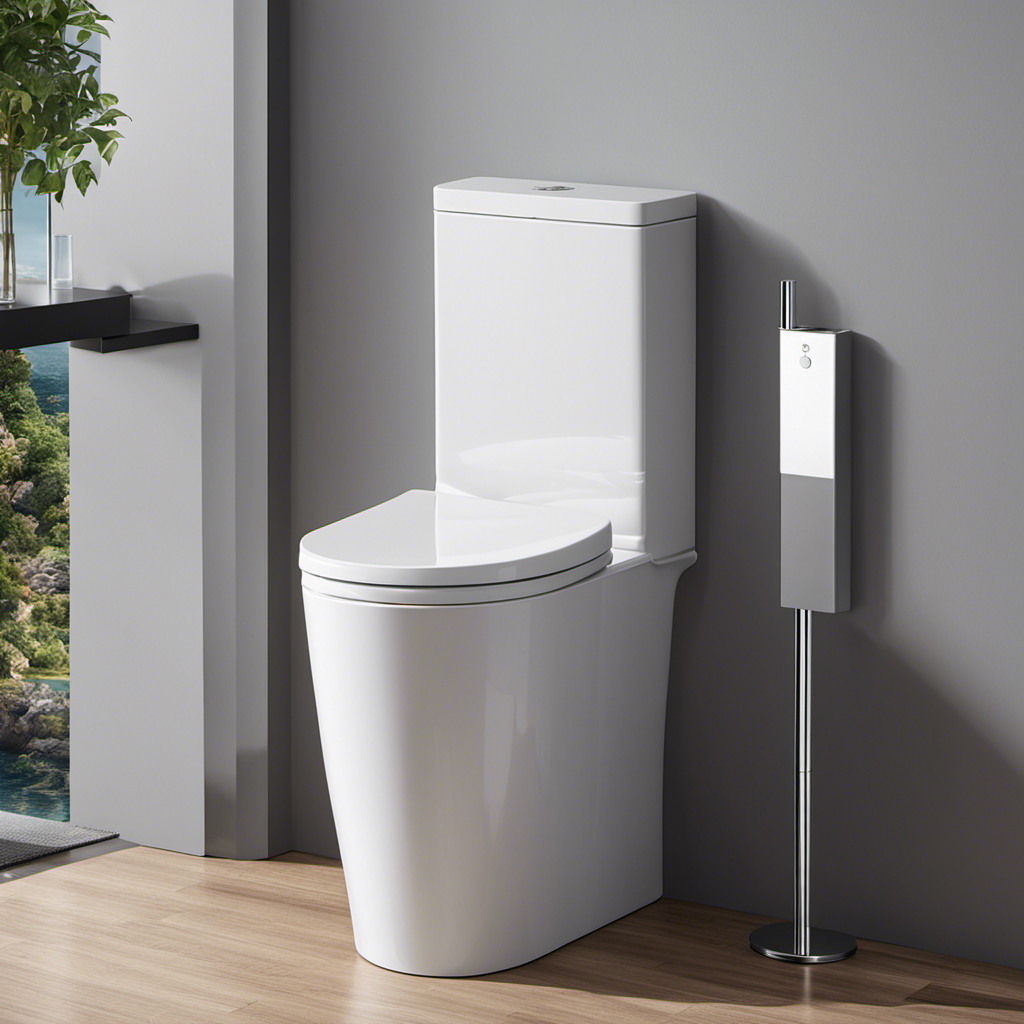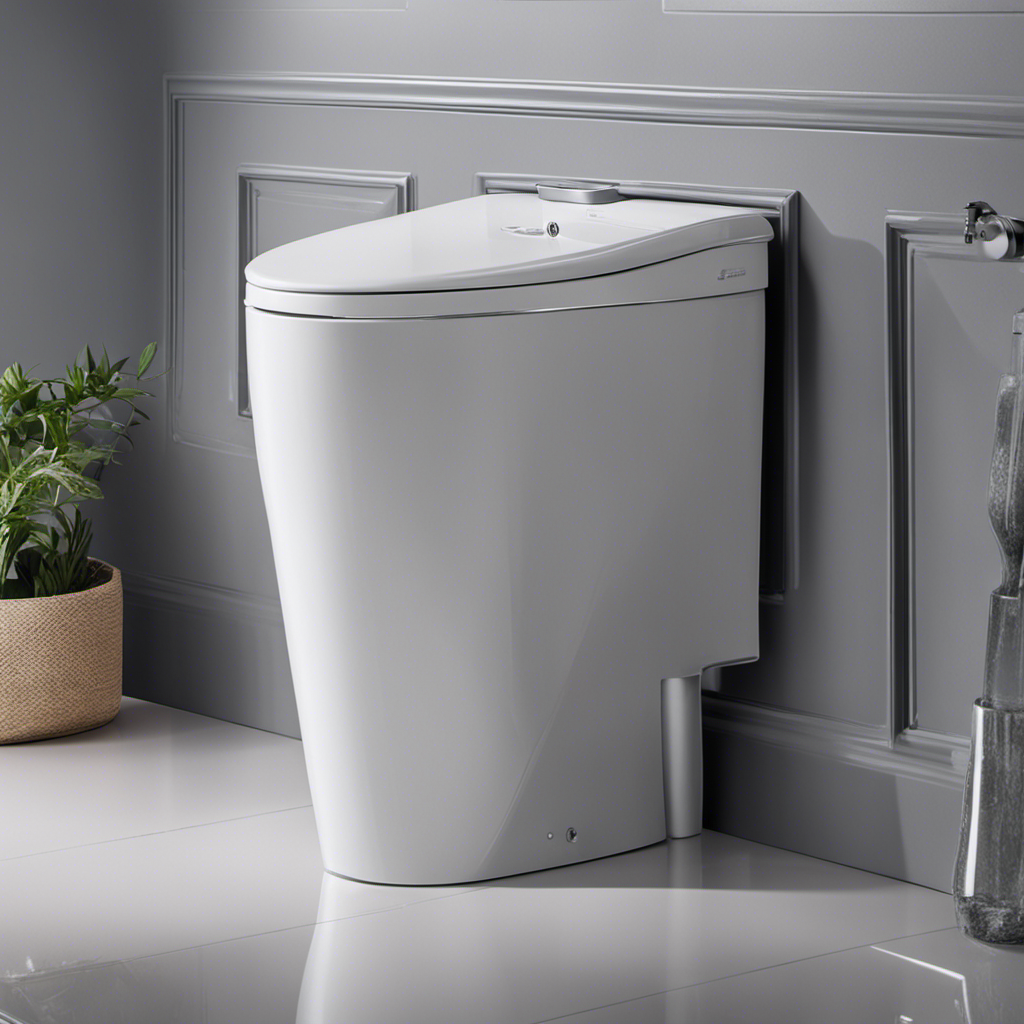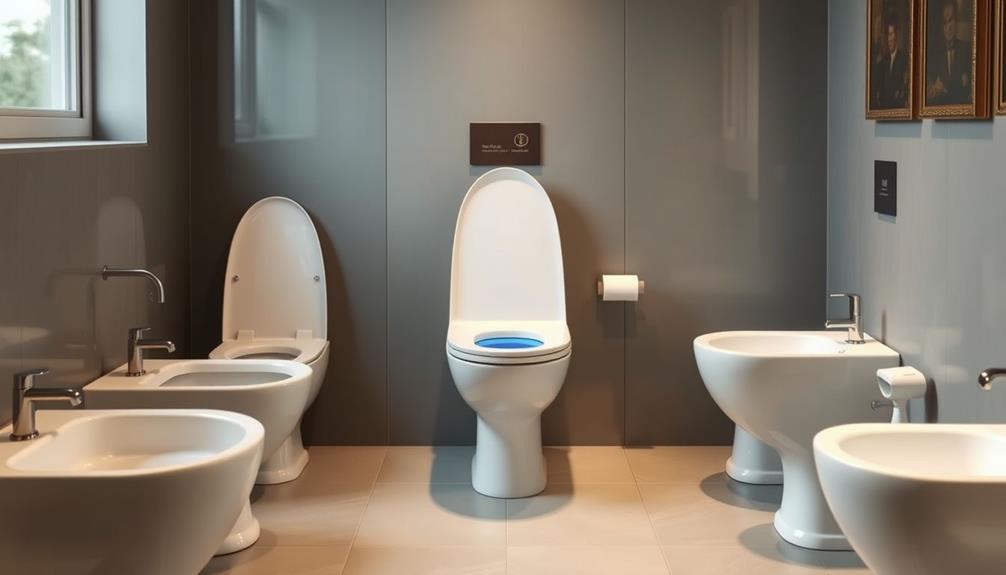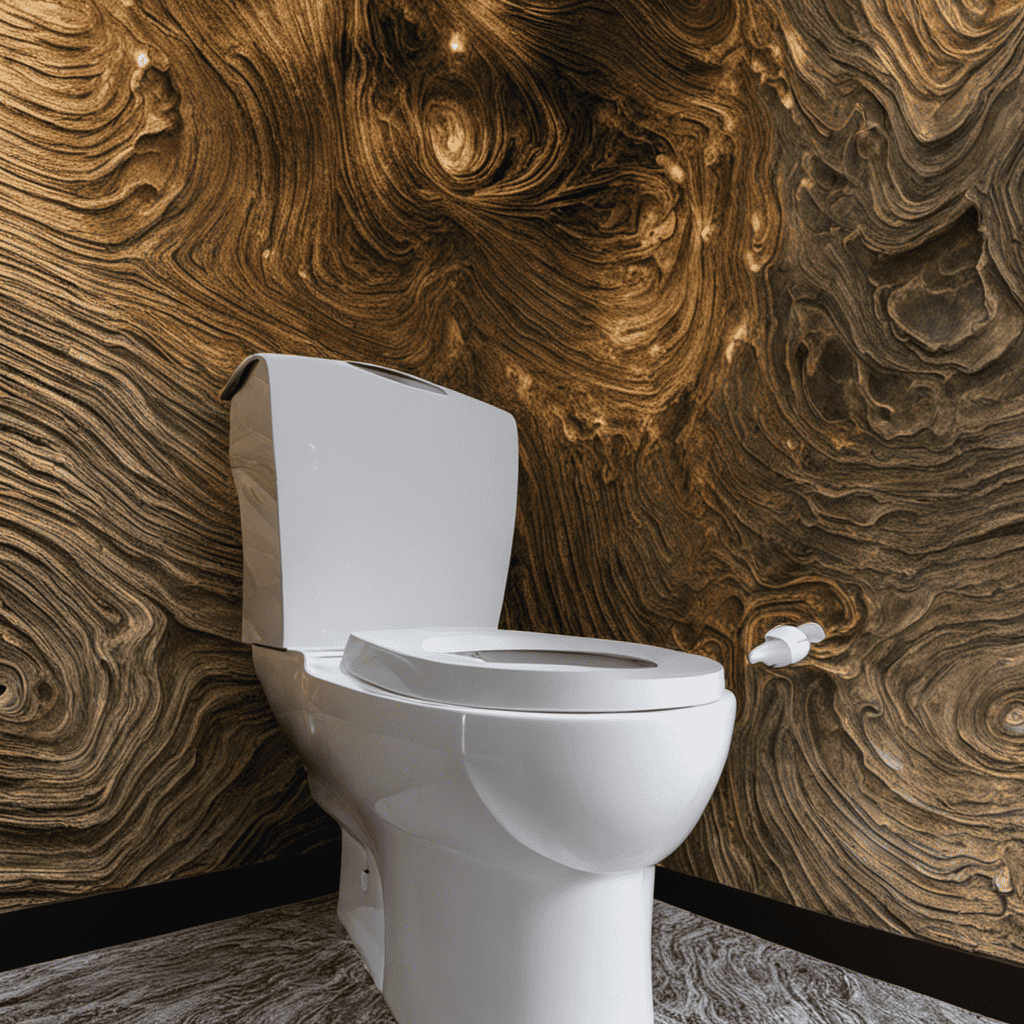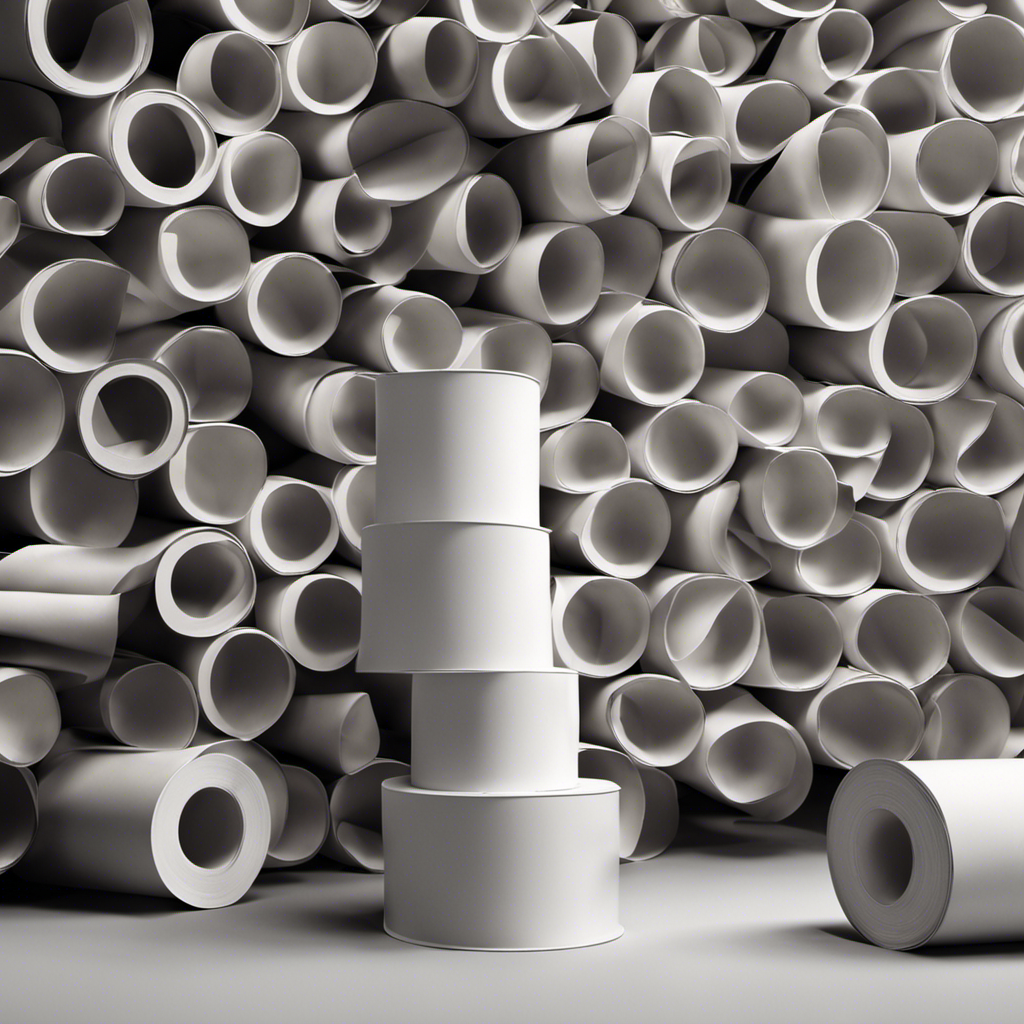As the saying goes, ‘knowledge is power,’ and when it comes to understanding water consumption in toilet flushes, this adage couldn’t be more true.
In this article, I will delve into the different types of toilet flush mechanisms and their water usage.
I will also explore the factors that affect water consumption in toilet flushes, as well as the water-saving capabilities of modern toilet models.
Lastly, I will provide tips for reducing water usage in toilet flushes and compare the water usage between traditional and low-flow toilet flushes.
Get ready to dive into the world of toilet flushes and discover just how much water they really use.
Key Takeaways
- Gravity flush mechanisms use around 1.6 gallons (6 liters) of water per flush.
- Dual-flush toilets offer full flush and reduced flush options, with the reduced flush using as little as 0.8 gallons (3 liters) of water.
- Water-saving toilet technologies have been developed to minimize water consumption in toilet flushes.
- Low-flow toilet flushes can save nearly half the amount of water compared to traditional flushes.
Different Types of Toilet Flush Mechanisms and Their Water Usage
There are different types of toilet flush mechanisms, and they each use varying amounts of water. Water-saving toilet technologies have been developed to minimize the impact of toilet flushes on water conservation.
One type of flush mechanism is the gravity flush, which uses the force of gravity to empty the tank and bowl. This type typically uses around 1.6 gallons (6 liters) of water per flush.
Another type is the pressure-assisted flush, which uses compressed air to forcefully flush the waste. This mechanism uses approximately 1.1 gallons (4 liters) of water per flush.
Dual-flush toilets offer two options for flushing, allowing users to choose between a full flush and a reduced flush for liquid waste. These toilets can save even more water, with the reduced flush using as little as 0.8 gallons (3 liters) of water.
Considering these different mechanisms, it is evident that the type of flush mechanism installed in a toilet has a significant impact on water consumption.
Moving on to the next section, let’s explore the factors that affect water consumption in toilet flushes.
Factors Affecting Water Consumption in Toilet Flushes
Factors like the type of toilet and the age of its components can affect how much water you’ll end up using when you flush. There are various water-saving technologies and design features that can significantly impact water consumption in toilet flushes.
Here are some key factors to consider:
-
Toilet type: Different toilet designs, such as gravity flush, pressure-assisted flush, or dual flush, can vary in their water usage. Dual flush toilets, for example, offer separate flush modes for liquid and solid waste, allowing for more efficient water consumption.
-
Flushing mechanism: The type of flushing mechanism, whether it’s a siphonic or washdown system, can impact the amount of water needed for a flush. Siphonic toilets use a siphoning action to remove waste, reducing the need for excess water.
-
Components and seals: The age and condition of toilet components, such as the fill valve, flush valve, and flapper, can affect water consumption. Worn-out seals and faulty components may lead to leaks and unnecessary water wastage.
Understanding the Water-Saving Capabilities of Modern Toilet Models
Modern toilet models have advanced water-saving capabilities that can help reduce the amount of water used for flushing. These water-saving features are designed to minimize the environmental impact of toilet flushing by conserving water without compromising performance.
One common water-saving feature is the dual flush system, which allows users to choose between a partial flush for liquid waste and a full flush for solid waste. This feature ensures that only the necessary amount of water is used for each flush.
Another water-saving feature is the low-flow toilet design, which uses a smaller amount of water per flush compared to traditional toilets. These modern toilet models also incorporate efficient flushing mechanisms and improved bowl designs to maximize the effectiveness of each flush while minimizing water consumption.
Tips for Reducing Water Usage in Toilet Flushes
To reduce your water usage in toilet flushes, try implementing these simple tips:
-
Install a dual-flush toilet: These toilets have two buttons or handles, allowing you to choose between a full flush for solid waste and a half flush for liquid waste.
-
Use a displacement device: Placing a brick or a water-filled plastic bottle in the toilet tank can reduce the amount of water used per flush.
-
Adjust the fill valve: Lowering the water level in the toilet tank can result in less water being used during each flush.
Implementing these water-saving measures in your bathroom can have a significant impact on conserving water and reducing your environmental footprint. By using less water in toilet flushes, you contribute to the overall conservation efforts and help protect our precious water resources.
Now, let’s compare the water usage between traditional and low-flow toilet flushes.
Comparing Water Usage Between Traditional and Low-Flow Toilet Flushes
When comparing traditional and low-flow toilet flushes, it’s important to consider the amount of water saved with each flush. Low-flow toilet flushes are designed to use less water than traditional flushes, which can have a significant impact on water conservation and the environment. To illustrate this, let’s compare the water usage between traditional and low-flow toilet flushes in the following table:
| Flush Type | Water Usage (Gallons) |
|---|---|
| Traditional Flush | 3.5 |
| Low-Flow Flush | 1.6 |
As you can see, low-flow toilet flushes use nearly half the amount of water compared to traditional flushes. This reduction in water usage not only helps conserve our precious water resources, but also reduces the strain on water treatment and distribution systems. By adopting water-saving technologies like low-flow toilet flushes, we can make a positive impact on the environment and contribute to a more sustainable future.
Frequently Asked Questions
What Is the Average Water Pressure Required for a Toilet Flush?
The average water pressure required for a toilet flush depends on various factors, such as the design of the toilet and the plumbing system. Higher water pressure can improve flushing efficiency, but it should be within the recommended range to prevent damage.
Can I Retrofit an Older Toilet to Make It More Water-Efficient?
Retrofitting an older toilet to make it more water-efficient is possible. By implementing various water-saving techniques, such as installing a dual flush system or adjusting the tank fill valve, significant water conservation can be achieved.
Are There Any Alternative Flushing Mechanisms That Use Less Water?
Toilet flush alternatives and water-saving innovations have been developed to minimize water usage. These mechanisms employ various techniques such as dual-flush systems and pressure-assist technology to reduce the amount of water required for flushing, promoting eco-friendly practices.
How Often Should I Check and Repair Toilet Flapper Valves to Prevent Water Waste?
To prevent water waste, I check and repair toilet flapper valves regularly. By troubleshooting common flushing issues and taking steps to conserve water in the bathroom, I ensure efficiency and sustainability.
Are There Any Regulations or Guidelines Regarding Water Usage for Toilets in Commercial Buildings?
There are regulations and guidelines for water usage in commercial buildings. Water saving technologies, such as water efficient toilets, can have a significant impact on water bills while reducing water consumption.
Conclusion
In conclusion, understanding the water usage of toilet flushes is crucial in conserving water and promoting sustainability. By opting for modern low-flow toilet models, households can significantly reduce water consumption.
Interestingly, studies have shown that traditional toilets use an average of 3.5 to 7 gallons of water per flush, while low-flow toilets can reduce this amount to 1.28 gallons per flush or even less. This staggering statistic highlights the potential impact of choosing water-efficient toilets and emphasizes the importance of making informed choices for a greener future.
